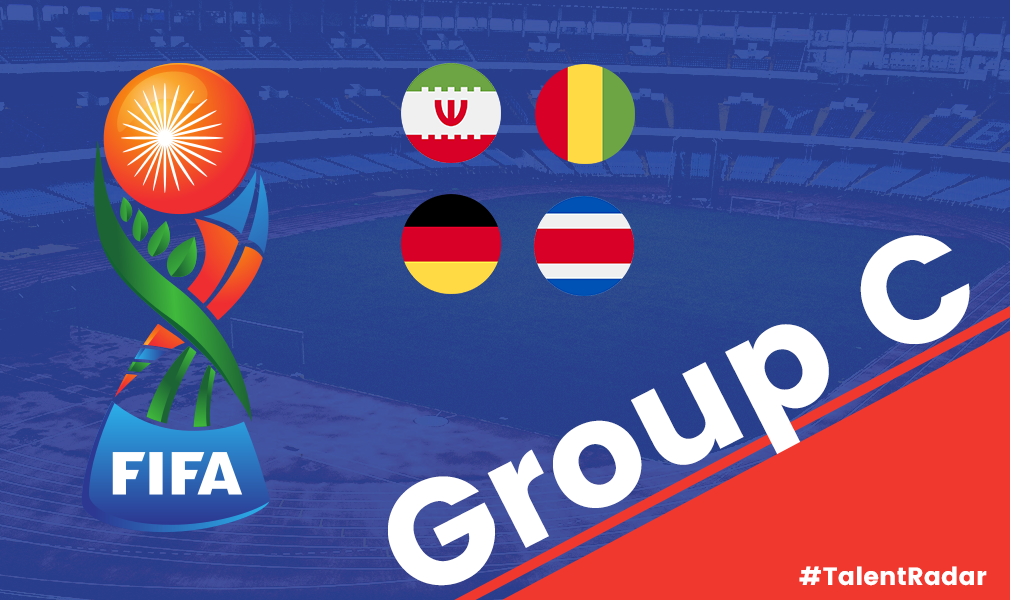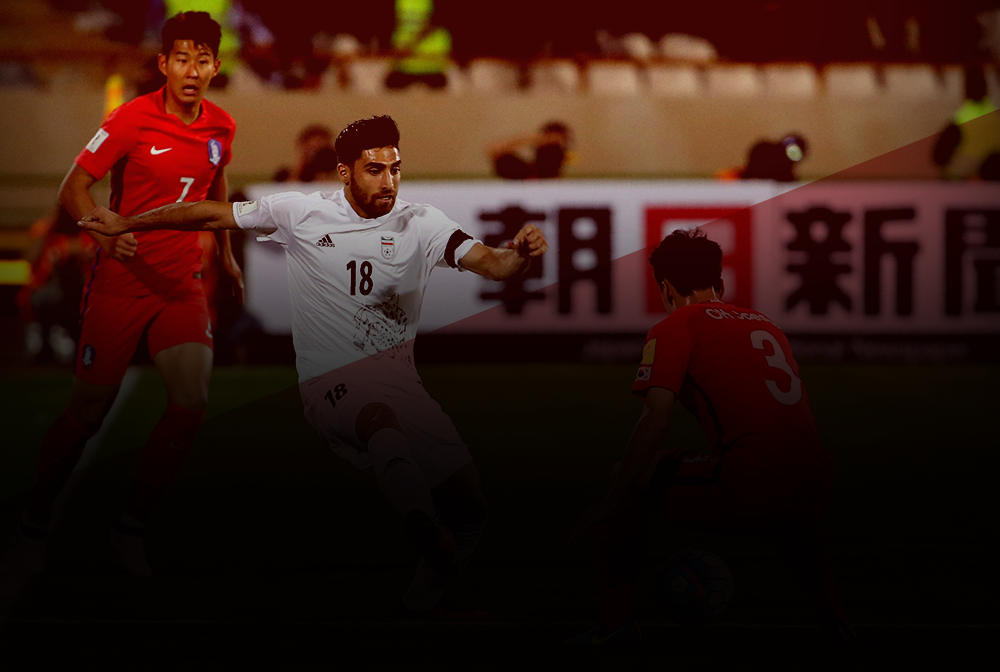
Hamoudi Fayad talks about the flaws in youth football set-ups in Western Asia, exploring the situation from multiple angles.
“You!” the coach barks, eager to end his session as the night prayers are imminent. The teenager, 16 years of age and given a few minutes to shine – awaits his fate. ‘Did I make it? I didn’t get enough time. Maybe he thought I was promising and wants me back for another session, come on, I am better than these players!’ he thinks nervously, mired in the quandary that seems to go on for years in one’s mind yet a mere few seconds in reality.
It is true that he is better than a large portion of the players on trial, and it is true that he should have had the chance to perform at another session. Yet the pretentiousness of the coaches oozes through their figure, their way of addressing players. “The Egyptian kid has been with us for years, we can’t just let him go. You see that other, Ukrainian or Russian guy? He’s our second option. It’s the best we could do, thanks for coming.”
Blunt, harsh and with a shade of arrogance. The young man left the stadium depressed, regretful and frustrated. “What could I have done?”, he asks me. His predilection to learn from my opinion meant something. I was inculcated by the pioneers of modern football coaching, tactics and the complexity of the football game. However I valued a trait over statistics, tactics and talent: mental security. Why is football at a substandard level in one of the world’s fastest growing cities, in a region prominent for its investment in European clubs?
So much promise, very little progress
In the scorching heat of the beautiful city in Dubai, there is an actual sport called football. Hotels, deserts, malls, transportation and fancy cars all define the vibrant city. Yet one subject that is constantly blacked out is football. Not just local football, but cafes with a plethora of TVs broadcasting Premier League and Champions League nights see fairly modest numbers attend. It was visible when Coutinho blasted a screamer over Jack Butland, only to find myself as the only person in jubilation. Surrounded by a dozen TV screens, people didn’t even give the goal a second look.
And with a country growing by the day, questions will start to be asked towards the sports developers in the nation. Especially after the emergence of Omar Abdulrahman, Amer Abdulrahman and Ali Mabkhout – all of whom led the United Arab Emirates to the Asian Cup semi-final in Australia – scouts will start to scour the country in search of the region’s best stars. Plenty of investment in first-tier football clubs in Europe stems from the Middle East, and a host of stars have emerged since the turn of the century, however the same cannot be said about putting that money into youth development.
86%, roughly, is the amount of the UAE’s population that are foreigners. Registered local players are at around 7,000 according to the The National, an aberrational number yet understandable with a population of one million locals living in the Emirates. What the situation now begs is an influx of foreigners.
Foreigners at the top earn around £2m a season in the Gulf, more or less depending on the quality or the name of the player. Jorge Valdivia, for example, will earn roughly £1.7m with new club Al-Wahda whom are managed by former Atletico Madrid manager Javier Aguirre. Meanwhile Lebanese National Team star Hassan Maatouk, a nimble runner for the Arabian Gulf League hopefuls Fujairah pockets around $800,000 (£510,000) a season.
Yet as I have duly claimed, the situation initially needs foreigners. Foreigners who’ve lived in the region, prepared to do what it takes to be developed at state of the art facilities. Speaking to Wayne Harrison, a former coach at Al-Ain football club: “They have state of the art facilities at the club. However the mental side of the game is a struggle for Emirati players as generally there is no discipline at home from my experience and this is the crux of the matter… But so much natural talent for the game there in those same kids.”
Precisely.
Freedom and Limitation
Limited by the foreigner rule that is ultimately harsh at youth level, foreigners head over to British or Spanish academies to learn from coaches with better coaching badges – not necessarily indicating a more competent coach – a vast amount of experience at the top level and brand new ideas. Unfortunately, this is hardly the case at professional football clubs.
Only 2 out of a squad made from 21 Emiratis are non-Emirati themselves, which leads to shattered hopes for some of the most promising players in the nation who hail from the 86% foreign national figure. To clarify, the fact that a player made the cut in Portugal and the USA but failed to make it in the UAE clearly demonstrates the nuances of a widely regarded tenuous youth system.
The development of youth players of various nationalities at that level will bring in more than just talents for clubs to reap rewards from by selling them on in the future, however a regulated rule that possibly provides training for at least 4-6 foreign players will give the Emiratis a different environment to play in. Of the hundreds of thousands of Brits, Spaniards and Germans based the nation, only 28 would be allowed to represent a professional club in one season at the current time.
Meanwhile Emiratis – protected by the foreigner rule – are given freedom to perform at varying levels and whether good or bad, are still able to play at the club whereas foreigners of higher ability and experience are ousted out.
Brought up in different areas, possibly exposed to moving between a myriad of cities, countries and continents, the foreigners can offer a different dimension to the football in place. At the Arabian Gulf League youth level you find around 294 players registered (currently 9.5% of foreigners play at professional clubs’ U-18 team) yet if a fair increase of spots are given to foreigners (6 for each team) that brings the percentage up to 28.5% of foreigners at U-18 level for the respective professional teams. A number that is just to the rapidly increasing foreign population to begin with, yet for locals a minor setback. This slowly eliminates the low quality local players who can learn from a failed experience, thus strengthening their mentality. Which brings me to my next point, what is the reason for substandard locals on a consistent basis?
The Truth
After concluding my meeting with a Sports Consultant, I headed over to the U-18 pitch. Foreigners were coming in for trials, locals were rapidly embedded while the teenagers were playing a friendly against a team taking the long bus trip from Ras Al-Khaimah.
Two local coaches took charge of the session as I sat down, before pacing back and forth, looking at the level of players. I wondered, where are the training sessions? The coaches started an 11 v 11 game between the players, with another 8 limited to the bench. It was 6pm.
The game had a continuous pattern, visible from the start of the game. Individual pressing, poor working of the channels and stale progression of attack. Besides the left back catching my eye with his ability to play in tight spaces – as he was shifted out to the flank – and bring the ball into midfield, there was nothing to note of.
Both teams failed to create any attacking chances of sort, and after a series of substitutions the game was halted for a half time break. He, the he I spoke of at the introduction of this article, was mired in consternation. ‘How could I possibly be accepted or rejected without a chance to play?’ From my experience of watching, he could bring a new element of play into the match. Holding the ball up, adept at punishing defenders in the channels and confident in front of goal were his best traits. Should he have entered at half time, he would be given the chance to thwart the opposition and surely force the coach into giving him a second look.
Despite his shining ability, the absence of training sessions meant the coaches had no first impression of the lad. It was inevitable, that the player would have to be let go – and for the better. 7 minutes turned out to be his time limit, 7 minutes at the end of the game. The game had finished at 0-0, after a full 90 minutes and half time. The coaches then proceeded into ordering sit-ups and push-ups before dismissing the players.
Yet albeit his rejection, I was optimistic for the player who would be much more suited to the game at one of the British or Spanish academies. The coaches at the professional clubs, shocked me. “Pass here; cut inside; shoot!; run!; give it back to the keeper; pass to the other centre back; dribble forward; keep the ball”. Yes, 17-year-olds were being told, move by move, to do specific things on the pitch. When the coaches weren’t doing so, they weren’t keeping their eye on the game at all. Backs were turned, as they went into a chat.

Chris Brown, formerly of Crewe Alexandra, opened up IJF in Dubai.
This is not the case with every coach. Neither is this a case of wrong coaching, rather this is a case in where a player fails to become independent due to the preference of coaches to force players to playing in their philosophy, whatever that is. This is why players in the wealthy Gulf nations are reluctant to move abroad, favouring their home as their lengthily career option.
Steps towards consistency in development?
Well, despite all the glitz and glamour surrounding Dubai there are people out there looking to create a dynasty. Football in the Gulf has no ceiling in terms of potential, and Qatar are taking steps to becoming successful in this respect. Fans who watched them at the FIFA U-20 World Cup may have been surprised to see how a nation hailing from the Gulf is not completely formed by locally based players.
Akram Afif, Ahmad Moein, Fahad Ali, Almoez Ali, Assim Madibo, Jassim Al-Jalabi, Jassim Omer, Youssef Hassan, Sultan Al-Kuwari, Salem Al-Hajri, Hassan Youssof and Ahmad Al-Saadi are amongst the players plying their trade abroad. KAS Eupen and LASK Linz, two clubs with partnerships formed alongside the Aspire Academy are currently honing the talents mentioned above.
WATCH: Akram Afif scores a screamer for AS Eupen
These players face the challenges of competitive divisions unlike the top league. The Championship, the LIGA Adelante, the 2.Bundesliga are exemplars of up and down competitions. These leagues are more likely to go down to the final day and have many changes in the rankings over the season. Nottingham Forest were early favourites at the start of the 2014-15 Championship after one loss in1 13 games under Stuart Pearce, yet they finished in a relatively embarrassing 14th. Bournemouth won the league by a single point. Two points separated the top 3 in Spain, while 3 teams were involved in the fight for the final promotion spot in Germany alongside 6 (!) teams looking to avoid relegation on the final day.
In Belgium and Austria, these promising players will not only develop their talent but also enhance themselves to suit the nuances of the European game. As former Manchester City EDS player, Boudy Ramadan of Lebanon, told me: “I grew up in Belgium, and playing for Anderlecht, they teach you something different to the Arab game. We learned how to respect teammates, put aside political differences for example which is a huge problem in Lebanon. I got used to the training sessions and their challenges, what to expect and what schedule I have to be on.”
“What we also got used to was reception. Reception to differing opinions, how to react to omittance from the first team line-up and various other things that occur in the European football game.”
What players also interact with are the fans: either huge amount of pressure, or playing in front of an empty stadium. Saudi Arabia have teams that average attendance of over 40,000 fans per game however the UAE and Qatar, who boast better foreigners and a better national team have no current team that averages over an attendance of 7,500 – that is, Mirko Vucinic and Jefferson Farfan’s Al-Jazira in Abu Dhabi.
So taking these steps are vital, yet can be done locally too. Instead of enjoying trophy after trophy at Al-Sadd, the likes of Afif and Almoez have to endure tough times to help their team gain promotion. Think, work together, achieve. Yet Qatar’s efficient plan to create the right amount of players is being heavily contradicted by their naturalisation plan. Players – who are no better than the current crop out there locally – are being shifted into the national team. The latest inclusion, Rodrigo Tabata of Brazilian origin, joins at the age of 34.
His appearance with Qatar now pulls a spot back for a promising youngster. The players now out abroad will be 28 by Qatar 2022, and Qatar certainly don’t want to join South Africa as one of the only host nations to fail at the first hurdle. It would be agreeable if Qatar are finding relative success with Tresor, Lecomte, Boudiaf, Muntari and Tabata (all of whom are non-Qataris playing for Qatar), yet the outcome is that Qatar are now worse than they were in 2014.
Their Asian Cup blunder in early 2015 was largely blamed on the call-up of foreigners who had never played for Qatar before at the time. If Qatar were eliminated with their youngsters, there is no doubt that it would pay off in the long-term.
Develop youngsters in front of different national teams, let them fail now where there is still chance to fail. Once they fail, they bounce back. “Success is not defined by how high you rise, but by how high you bounce back after you fail.”
If they fail in preparation for the 2022 World Cup, then at that point there is no turning back.
This type of long-term planning has hindered West Asia’s potential to rise as a region filled with bundles of talent – besides the talents emerging from Iran, and briefly Lebanon and Iraq. State of the art facilities, a vast amount of freedom financially, an excess of raw talent and talented coaches arriving from abroad. What is missing here, is the actual development of players.
With so much talent, a player can only be guided by his agent, coach or parent before running himself into the ground. Although a player with mental stability, bravery and determination can guide himself to the highest depths.
This is why you have players in the mould of Mario Balotelli and Adel Taarabt, both of whom are dangerous to team morale and encourage solipsism. These players are immensely talented, yet opposed to the idea of holism. These players are also lethargic, always misbehaving and thinking of themselves as too much. Moreover, we are blessed with determined (and talented) stars such as Alexis Sanchez and as we saw at the World Cup Final; Bastian Schweinsteiger.
The Middle East sees many a player in the form of the former, talented, yet with a low temper and lazy mentality. The weather may be unsuitable, but if Alexis Sanchez was in their place would he be as reluctant to play football? No, the love for football signifies, simply, a love for football. No matter the weather, the conditions, the surface, the financial rewards or the teammates: football is football.
It’s time to move on, time to take the next step. Nottingham Forest, PSG and Manchester City are some of the clubs owner by Arabian businessmen. Xavi Hernandez, Raul Gonzalez and Fabio Cannavaro are some of the foreigners to grace the leagues in the region. When will it be time to see a local player make it in Europe and become a success?
Written by Hamoudi Fayad
- Hipster Guide 2016-17: Bayer Leverkusen’s tactics, key players and emerging talents - August 25, 2016
- Talent Radar: Saudi Pro League 10 Young Players (U-23) to Watch in 2016-17 - August 23, 2016
- Dry Grassroots: Youth Football Deficiencies in Western Asia - July 19, 2016


























































